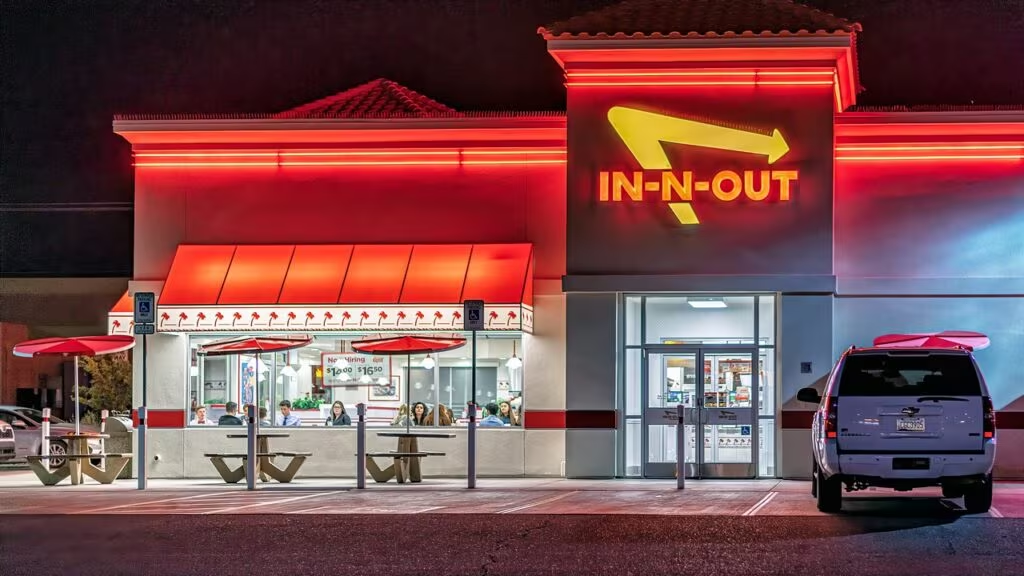Wendy’s Initiates Strategic Closures to Boost Brand Health
The Wendy’s Company, one of the nation’s largest fast-food chains, has announced a significant restructuring of its domestic footprint, confirming plans to close hundreds of underperforming restaurants across the United States. This move, while impacting local communities, is positioned by the company as a critical step toward long-term profitability and brand modernization.
The announcement was made by Interim CEO Ken Cook, who stated that the closures would affect a “mid single-digit percentage” of Wendy’s total restaurant portfolio. Given Wendy’s extensive presence in the U.S., this percentage translates to a substantial number of locations that will cease operations over the coming years.

Decoding the Numbers: What a ‘Mid Single-Digit Percentage’ Means
For consumers and franchisees, the term “mid single-digit percentage” requires translation into concrete numbers. Wendy’s operates thousands of locations globally, with a significant majority—over 4,000—located within the United States. A mid single-digit percentage typically ranges from 4% to 6%.
Based on the U.S. footprint, this strategic reduction could affect anywhere from 160 to 240+ restaurants. The decision reflects a calculated effort to prune the portfolio of locations that are either unprofitable, outdated, or poorly positioned for the chain’s future focus on digital sales and drive-thru efficiency.
The Rationale for Portfolio Optimization
This type of large-scale closure is not a sign of imminent financial distress but rather a common strategy among mature fast-food giants. The goal is often to increase the average unit volume (AUV) and improve the overall health of the franchise system. The closures are primarily focused on:
- Underperforming Locations: Restaurants with consistently low sales volumes or high operating costs that drag down overall profitability.
- Outdated Infrastructure: Older locations that do not meet the standards for modernization, such as the company’s new “Global Next Gen” design, which emphasizes streamlined operations and digital integration.
- Franchise Health: Addressing locations run by franchisees who may be struggling financially or unwilling to invest in necessary upgrades.
“This is about optimizing our footprint to ensure every location contributes positively to the brand equity and financial performance,” Interim CEO Ken Cook stated during the announcement. “We are prioritizing quality over quantity as we look toward sustainable growth in a highly competitive market.”
The Broader Context: Fast Food’s Shift to Digital Efficiency
Wendy’s decision aligns with a major trend sweeping the quick-service restaurant (QSR) industry in 2025: the pivot toward efficiency, technology, and smaller, more profitable footprints. The pandemic accelerated consumer reliance on drive-thrus, mobile ordering, and delivery, making older, dine-in focused models less viable.
Key Industry Drivers Behind the Closures:
- Digital Integration: Newer Wendy’s locations are designed to handle high volumes of digital and delivery orders, often requiring less physical space for dining areas.
- Labor and Inflationary Pressures: With rising labor costs and commodity prices, every restaurant must operate at peak efficiency. Low-volume locations become unsustainable quickly.
- Real Estate Strategy: The company is likely exiting expensive leases in prime, but low-performing, urban or dense locations in favor of suburban or highway spots optimized for drive-thru traffic.
This strategy is designed to free up capital and resources, allowing the company and its franchisees to invest heavily in the remaining, high-potential locations, ensuring they are equipped with the latest technology, including advanced kitchen equipment and AI-driven ordering systems.

Impact on Consumers and Employees
While the corporate strategy focuses on long-term health, the immediate impact of hundreds of closures is felt by local communities and the employees who staff these restaurants.
For Consumers:
Readers whose local Wendy’s may be affected should understand that the closures are typically gradual and based on individual franchise decisions. Corporate announcements rarely name specific locations immediately. The closures are intended to strengthen the overall brand experience, meaning that remaining locations will likely be newer, cleaner, and offer faster service due to better design and technology.
For Employees:
Employees at closing locations face job displacement. However, in the current tight labor market for the QSR sector, many franchisees often attempt to transfer staff to nearby, higher-performing locations. The company’s focus on high-volume stores suggests that the demand for skilled labor at the remaining locations will remain high.
Key Takeaways for the Fast Food Market
Wendy’s decision underscores a fundamental shift in the QSR landscape, prioritizing operational excellence over sheer market saturation. The key points for stakeholders are:
- Scale of Closures: Approximately 160 to 240+ U.S. restaurants are expected to close, representing a “mid single-digit percentage” of the domestic footprint.
- Leadership: The strategy was announced by Interim CEO Ken Cook as part of a long-term plan.
- Focus on Modernization: The closures clear the way for investment in the Global Next Gen design, which boosts digital and drive-thru capabilities.
- Financial Strategy: This is a portfolio optimization move aimed at increasing average unit volume and improving overall franchise profitability, not a sign of corporate failure.
What’s Next
Wendy’s will continue to work with its franchisees to identify and execute the closures over the next several quarters. Investors and analysts will be watching closely to see if this strategic pruning leads to the expected increase in same-store sales and improved margins, validating the shift toward a more streamlined, technologically advanced operation. The success of this strategy may set a precedent for other legacy QSR chains facing similar challenges in the evolving 2025 market.
Original author: Brandon Champion | bchampio@mlive.com
Originally published: November 7, 2025
Editorial note: Our team reviewed and enhanced this coverage with AI-assisted tools and human editing to add helpful context while preserving verified facts and quotations from the original source.
We encourage you to consult the publisher above for the complete report and to reach out if you spot inaccuracies or compliance concerns.

